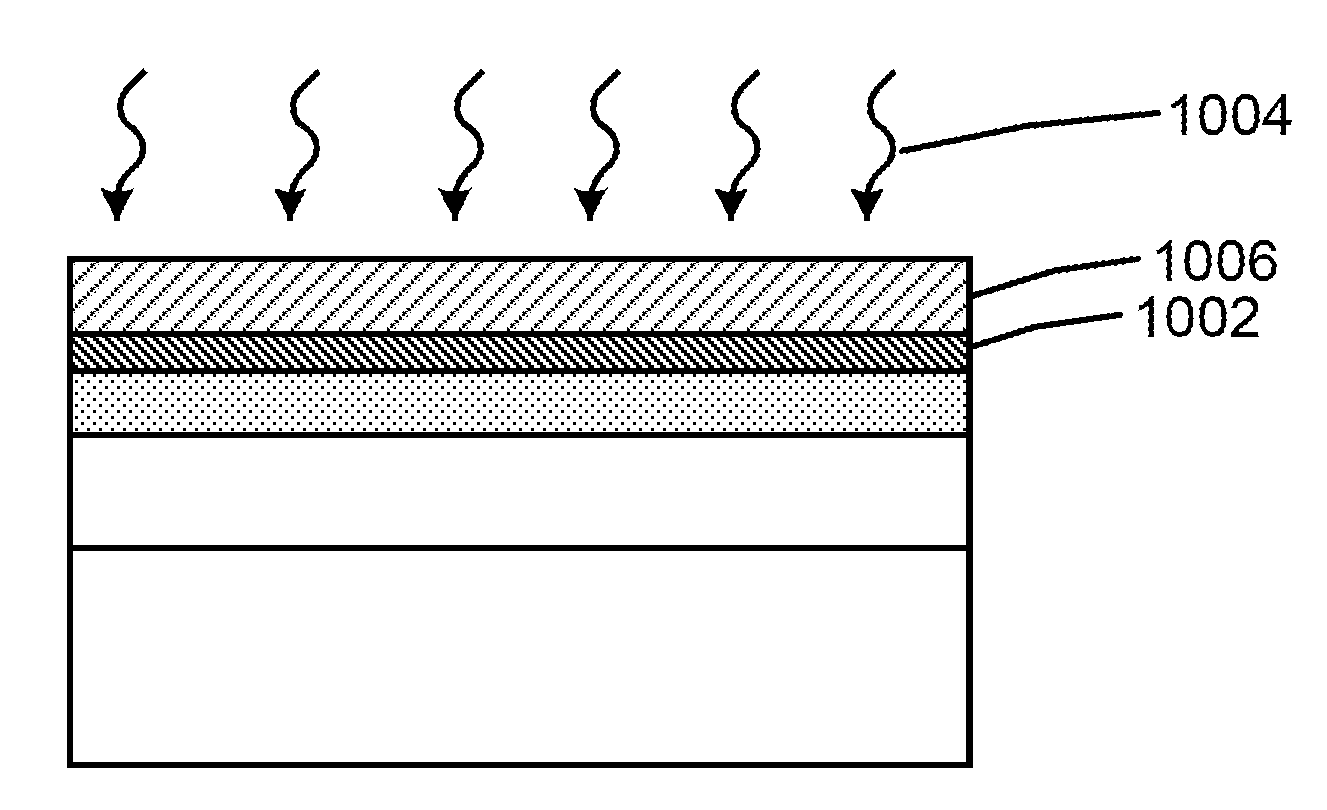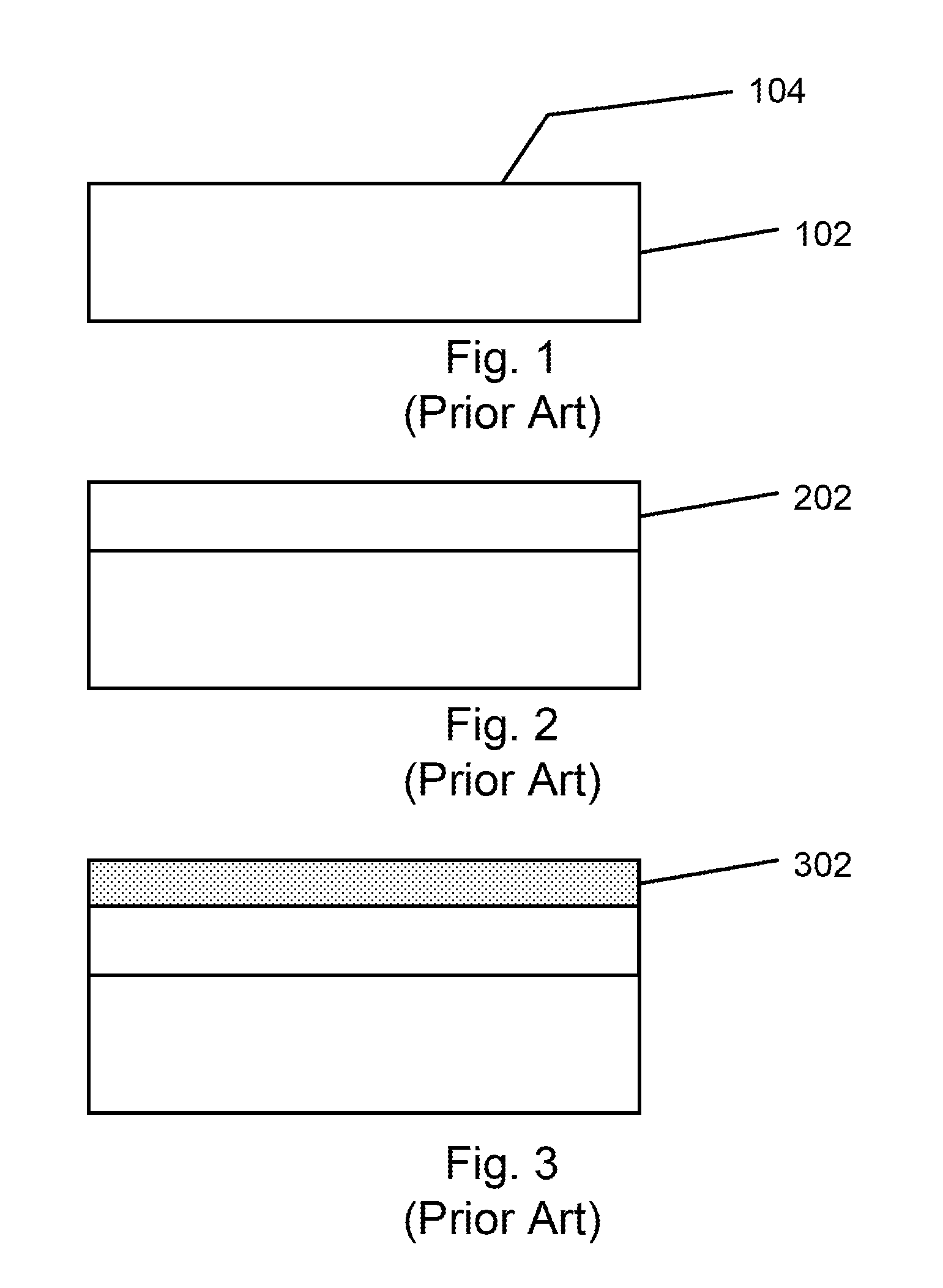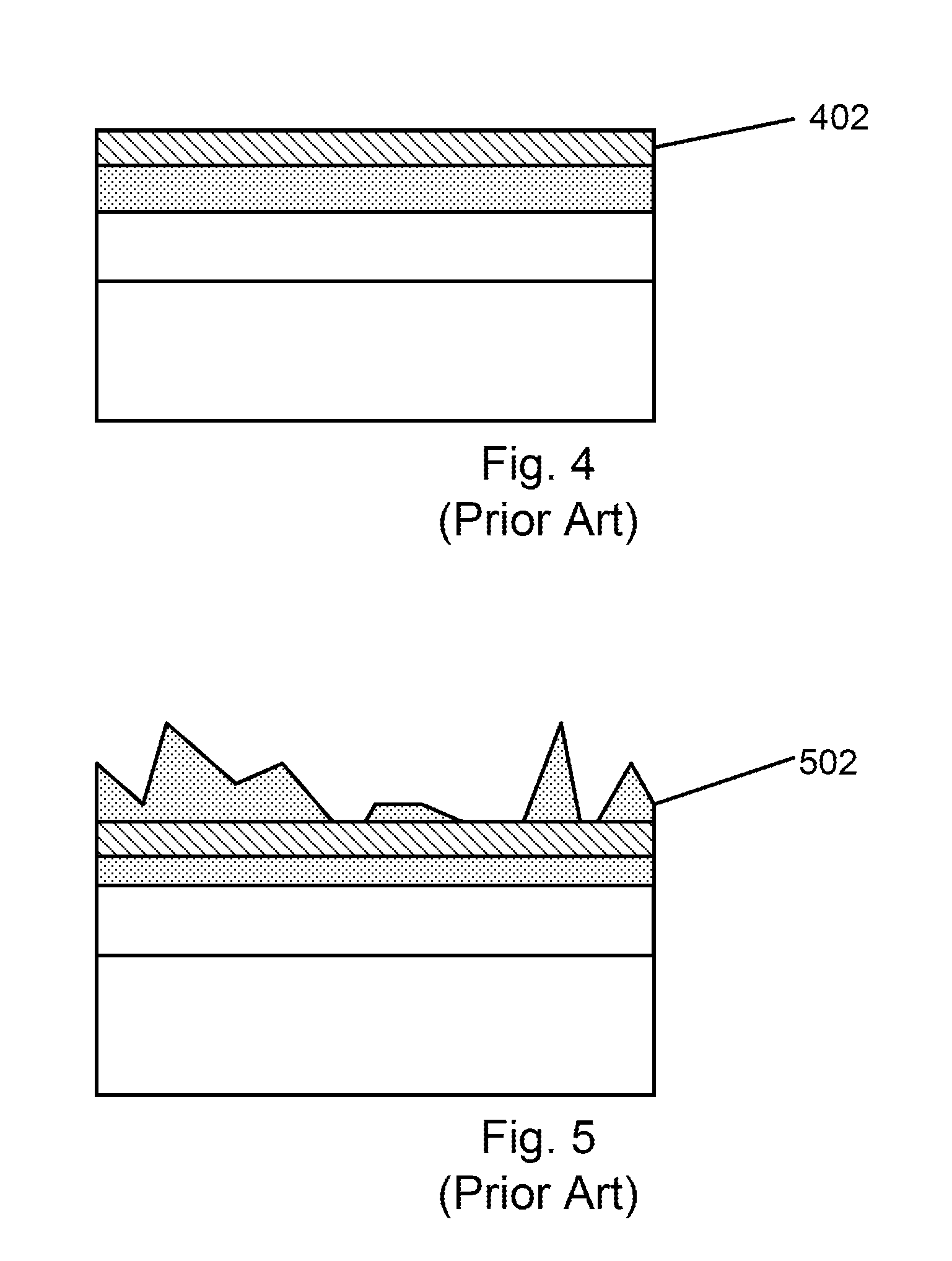P+ polysilicon material on aluminum for non-volatile memory device and method
a memory device and polysilicon material technology, applied in the field of resistive switching devices, can solve the problems of increasing power dissipation, reducing device performance, and non-scaling of sub-threshold slopes
- Summary
- Abstract
- Description
- Claims
- Application Information
AI Technical Summary
Problems solved by technology
Method used
Image
Examples
Embodiment Construction
[0014]The present invention is directed to switching devices. More particularly, embodiments according to the present invention provide a method and a device structure for a resistive switching device. The resistive switching device can be used as a non-volatile memory device but it should be recognized that the present invention can have a much broader range of applicability
[0015]FIGS. 1-5 illustrate part of the steps of a conventional method for forming a non volatile memory device. As shown, the conventional method includes provided a semiconductor substrate 102 having a surface region 104. The semiconductor substrate can be single crystal silicon, silicon on insulator, silicon germanium or other suitable material. A first dielectric material 202 is formed overlying a surface region of the semiconductor substrate. The first dielectric material can be silicon oxide or silicon nitride or a low K dielectric, or a high K dielectric or a dielectric stack depending on the application. ...
PUM
| Property | Measurement | Unit |
|---|---|---|
| sizes | aaaaa | aaaaa |
| size | aaaaa | aaaaa |
| thickness | aaaaa | aaaaa |
Abstract
Description
Claims
Application Information
 Login to View More
Login to View More - R&D
- Intellectual Property
- Life Sciences
- Materials
- Tech Scout
- Unparalleled Data Quality
- Higher Quality Content
- 60% Fewer Hallucinations
Browse by: Latest US Patents, China's latest patents, Technical Efficacy Thesaurus, Application Domain, Technology Topic, Popular Technical Reports.
© 2025 PatSnap. All rights reserved.Legal|Privacy policy|Modern Slavery Act Transparency Statement|Sitemap|About US| Contact US: help@patsnap.com



